A practical double apron, typical of those worn by the lower classes in early-mid 16th century Germany.
Although many people refer to the Doppelschürze as a ‘midwife’s apron’ it was actually used to protect Bauer women’s clothing for all kinds of dirty work. I have found it ideal for use as a cooking apron, especially working over an open fire, where it helps restrain my skirts.
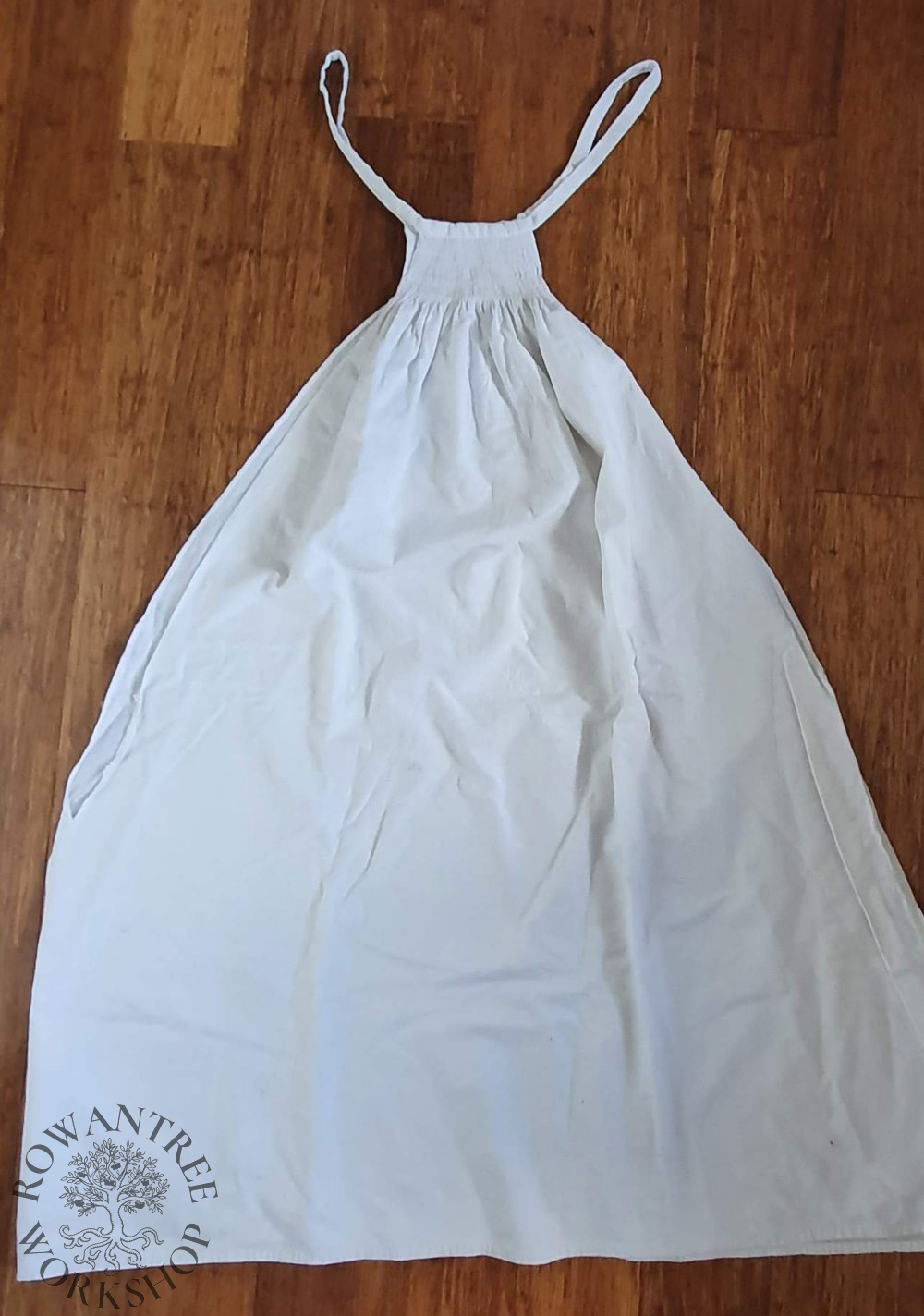
Research & Design
Doppelschürze are the most common aprons worn by lower class German women in the late 15th century and the 16th century, while working in the field, doing laundry – or even joining in the dance at the village fair. Textiler Hausrat (Zander-Seidel 1990) notes they were so typical, they were used to indicate ‘peasant’ in woodcuts longer after the fashion waned.
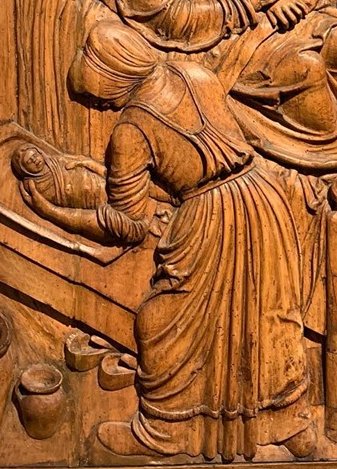
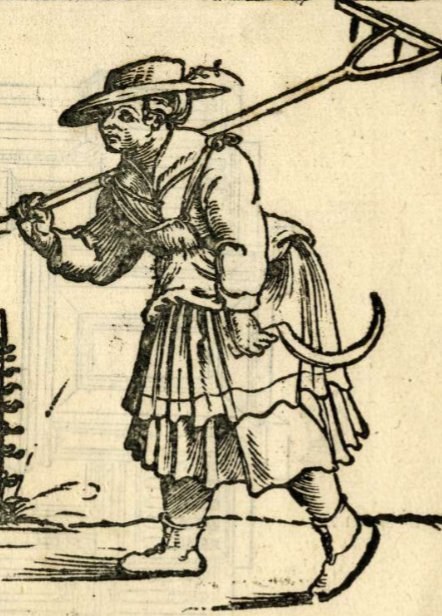
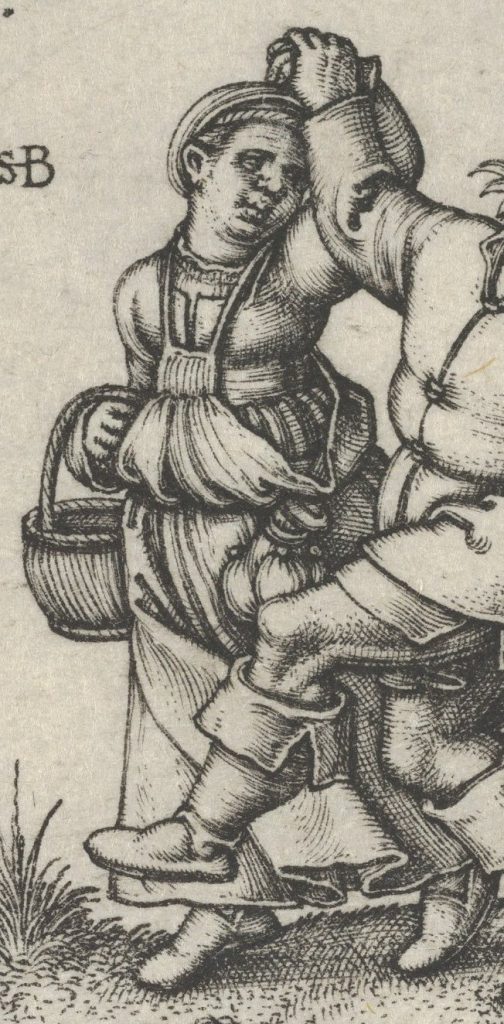
Source: The Met
This style of apron was also worn by better class servants and housewives when working at messy tasks – including midwifery.
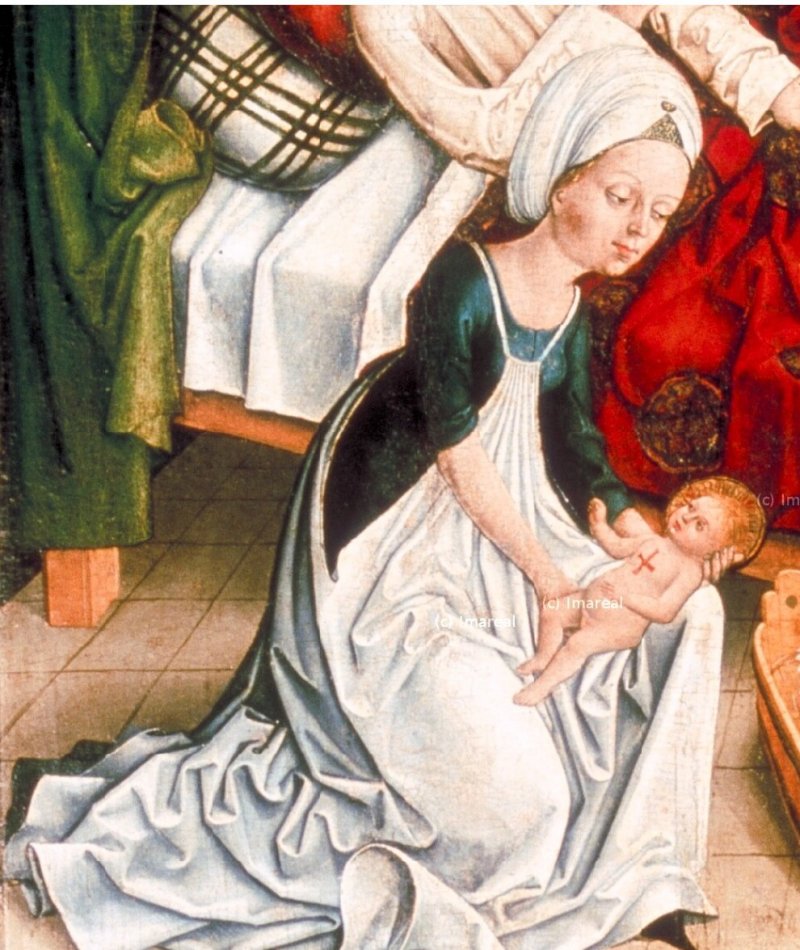
Source: Imrael
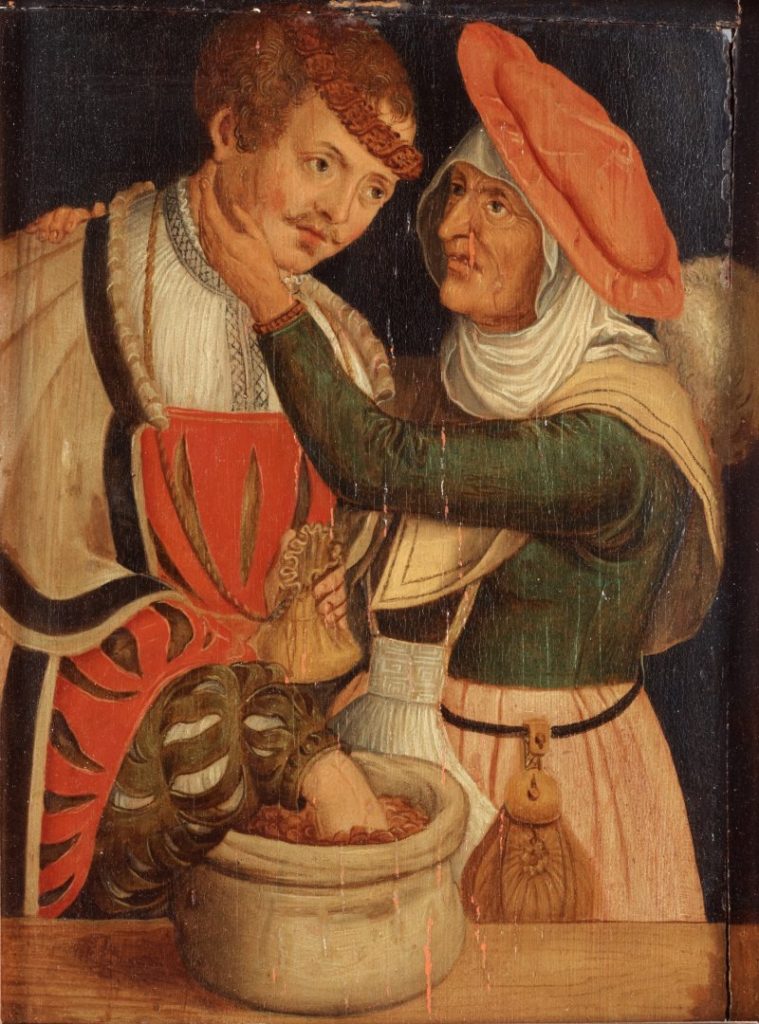
Source: Bulowskis
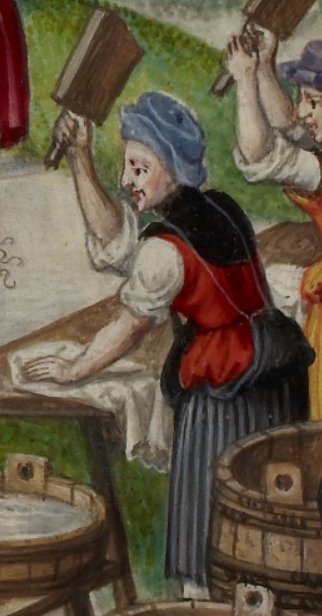
Source: British Museum
They are not depicted on merchants or noble women and I have not found any evidence of their use in other countries (but would love to know if there are such images).
The front and back of the Doppelschürze are the same – the top section is gathered into a narrow area with straps over the shoulders, side openings to the the hips or below, and the base of the skirts joined. When not hitched up, they are mid-low calf in length. There are a few examples showing decorative embroidery over the pleats, but more are plain.
Textiler Hausrat notes that aprons in general were mainly made of linen, linen cotton or linen-wool fabrics, usually in white, red and black. Almost all the examples I have seen of Doppelschürzen are white; the Splendor Solis example is a late exception.
Construction
The Doppelschürze needs to be wide enough at the base to walk in easily (the examples are quite full), but narrow enough at the top to gather into the band. I did some experiments with the top gathering and concluded that I could not gather the full width of the linen in – I would need to reduce the width, but keep the top section rectangular for pleating.
Since this was to be a working apron, I used a solid medium weight white linen, cutting the two main pieces and a single 5cm wide band for the top. I hand sewed it all using a fine linen thread, well waxed.
I turned a narrow hem along the sides, down to the join, then ran sets of gathering threads along the top 9cm, careful to keep them aligned on grain. I wanted tight, even pleats on the outside, so I secured them at the back with 4 rows of paired stemstitch over the pleats.
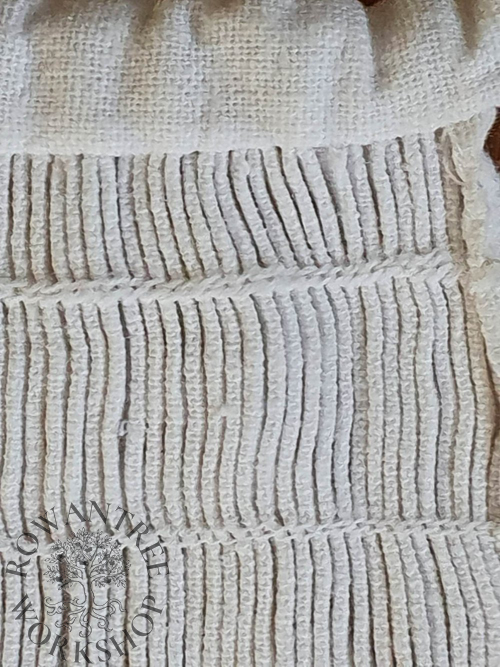
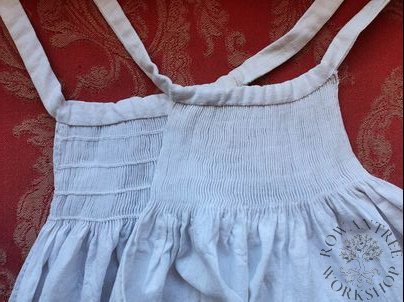
I sewed the side seams and flat-felled them with a simple running stitch. Before sewing the top band, I tried on the Doppelschürze to see how long the straps needed to be, testing with a length of ribbon. Too long and they fall off; too short and the apron will not sit well.
Once happy, I sewed the straps on as a single loop, enclosing the tops of the pleats and seaming the ends together. I hemmed the base and removed the gathering threads.
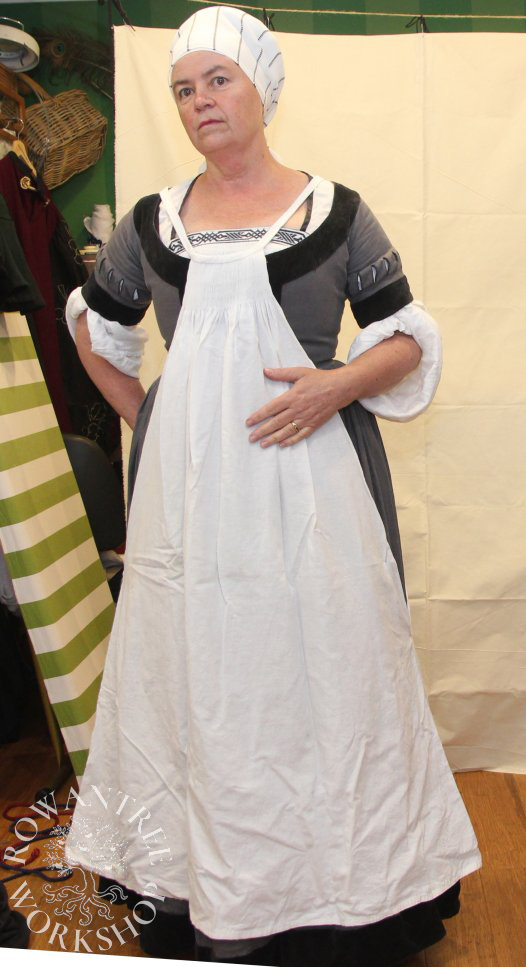
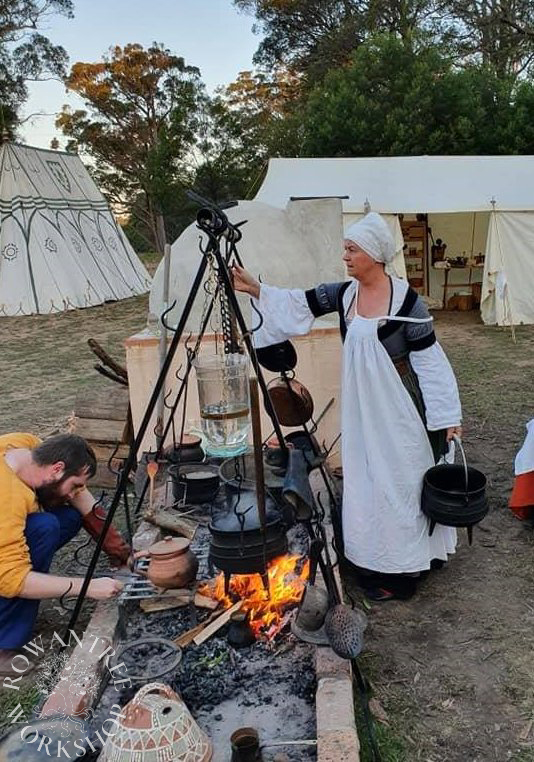
Afterthoughts
This Doppelschürze has served me well for many years, and is robust enough to withstand the necessary bleaching and heavy washing such a practical garment requires.
The linen I made this from was wide, but the images show even more fullness. If I was doing this again I would change the cut, using wheel pieces on the sides to get the width with less waste. And I would use larger pleats to get a more obvious ‘ridged’ effect.

